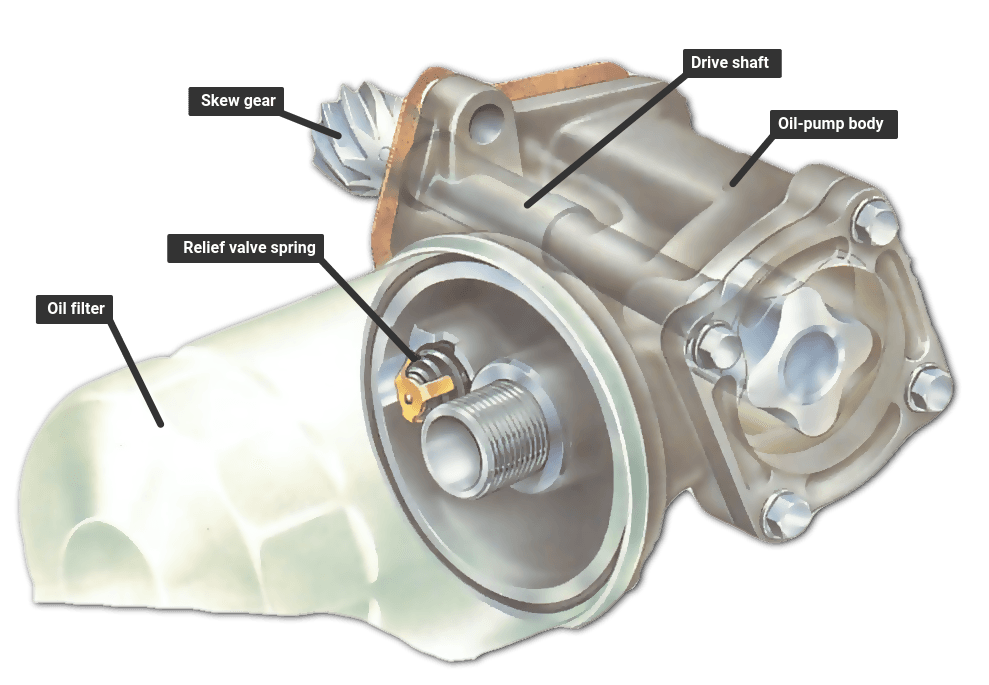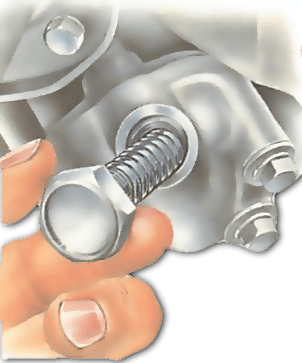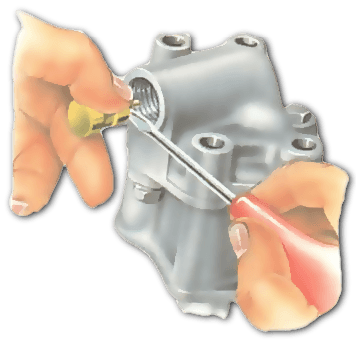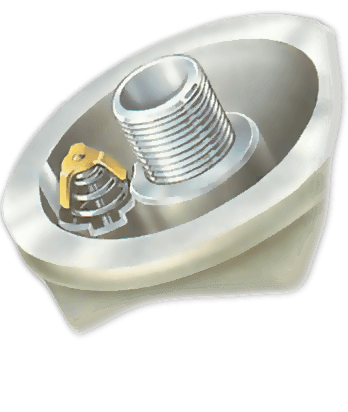Engine oil pump replacement
The Video Course teaches you everything about modern cars.

If the oil pump is fitted to the outside of the engine , you may be able to reach it from under the bonnet.
If not, apply the handbrake and support the engine end of the car on axle stands. Chock the other wheels.
On externally mounted pumps , remove the oil filter (See How to drain engine oil and remove filter ). On engines where the pump is inside the crankcase , drain the engine oil and re move the sump pan .
Removing the sump pan can involve removing or raising the engine. If so the repair is best left to a local main dealer. On certain cars it may also mean taking off the gearbox. If you are in any doubt, consult a dealer.
Removing, checking and refitting the pump
Put a tray or rag under the engine to collect any drips of oil, and unscrew the bolts securing the pump to the engine block .
As you withdraw the pump, mark the position of the pump drive shaft so it can be put back in exactly the same way.
The drive shaft sometimes drives the distributor as well (check in the service manual). On such engines, remove the distributor cap and mark the position of the rotor arm.
If the rotor arm is moved at any time — if the engine is turned, for example the ignition timing will have to be reset (See Adjusting the static timing ).
On externally mounted pumps with a skew gear , the gear can usually be put back in any position.
Use a rag dipped in petrol and, if necessary, a scraper tool to carefully remove dirt and any gasket remains from the pump mounting flange .
Be careful not to damage the mounting faces on the pump or engine. Usually only externally mounted pumps have a gasket.
Make sure the working parts of the pump are thoroughly cleaned (See Checking the oil pump ).
On externally mounted pumps, fit a new gasket to the pump flange, and keep it in position with a smear of gasket sealant while you locate the drive shaft.
Make sure the drive shaft is correctly aligned before you push the pump back into position. If it fails to locate properly, withdraw the pump and move the drive shaft very slightly, then try again.
Refit and tighten the pump securing nuts or bolts to the torque-wrench setting recommended in the service manual for your car.
On an internally mounted pump, refit the sump pan and replace the engine oil.
On both types, always fit a new oil filter (See How to drain engine oil and remove filter ). Also prime the pump with clean engine oil before you refit it to the car.
Run the engine very gently until the oil pressure builds up to normal, then check for oil leaks.
Checking an oil-pressure relief valve

The oil-pressure relief valve is usually fitted in the oil-pump body, sometimes in the engine block.
The valve consists of a ball or plunger held by a spring. If the engine has low oil pressure (indicated by the oil-pressure gauge or oil-pressure warning light), the relief valve may not be seating properly. The cause may be a weak or broken relief spring, dirty engine oil or a worn oil pump.
Most valves can be removed, but some types cannot. Before attempting to check the valve, you may have to check its position in a service manual for the car or by asking your local dealer.

If the valve is inside the oil pump, remove the pump. Unscrew the plug that holds the relief valve in the oil-pump body or engine block, and remove the valve spring and plunger or ball.
If the ball or plunger is stuck in the valve bore , try to release it by gently prodding with a thin screwdriver. Be very careful not to scratch or damage anything particularly the valve bore. Scratches in the bore, ball or plunger will allow oil to force its way past the valve, which will lower the oil pressure.
Clean all the parts thoroughly in paraffin, white spirit or petrol, and check the valve ball or plunger for signs of a ridge caused by wear or pitting.

Check the spring to see if any of the coils are cracked. To check it for weakness, compare its length with that of a new spring.
Using a lint-free rag dipped in paraffin or petrol, clean the valve bore, making sure any blockage or deposits are removed.
If any of the relief-valve parts are worn, throw them away and buy a new valve assembly.
The Ultimate Car Mechanics video course
Learn everything about modern cars from our new video series.
Learn more >-
We build a Mazda MX5 Miata from scratch
We start by tearing down and then rebuilding the whole car.
-
Every part explained
There's ridiculous detail on every part. Clearly and easily explained.
-
All modeled in 3D
We've created the most detailed 3D model ever produced so we can show you everything working.






